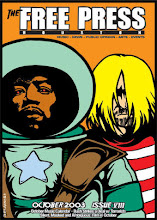The Lovely Bones

Peter Jackson has made his best film with The Lovely Bones. Fans of his early horror films or fanatic followers of his Lord of the Rings trilogy may be predisposed to think otherwise, but the fantasy/fairy tale reality Jackson conjures in Lovely Bones resonates long after the film has ended. Based on a novel by Alice Sebold, The Lovely Bones tells the story of a teen girl who recounts her murder from a heavenly perch.
The subject would be maudlin handled with other hands, but Jackson wants this to be a moral tale as well as pure visceral cinema. There's more than one sequence that relies on musical accompaniment and to the film's credit the soundtrack is scored by Brian Eno. Additional music from the likes of the Hollies or Cocteau Twins propel scene after scene with emotional weight.
Saoirse Ronan plays Susie Salmon (like the fish), with Stanley Tucci as the serial killer and Mark Walhberg and Rachel Weisz as her parents. Susan Sarandon takes command of the screen in a supporting role as the mother in law. About 30-minutes into the film Susie meets her end at the hands of Tucci only Jackson switches to expressionistic lighting and weird angles to show her in the afterlife. There's actually very little physical violence in this movie.
Once Susie is in heaven we witness visual effects that portray the afterlife as bountiful in splendor as one could imagine. Lots of special effects take the helm during the afterlife sequences. Most forceful is a scene portraying ships in bottles crashing against an unfriendly shoreline. To give you an idea of the amount of CGI, very eloquently integrated into the narrative, the end credits with all the special effects houses listed runs nearly 14 minutes. It's like Jackson is looking for a happy ground that combines suspense filled narrative with an otherworldly harmony.
There's never any doubt that Tucci is the killer, and in fact the whole affair has an objective point of view that seems to suggest that all things are transitory.













